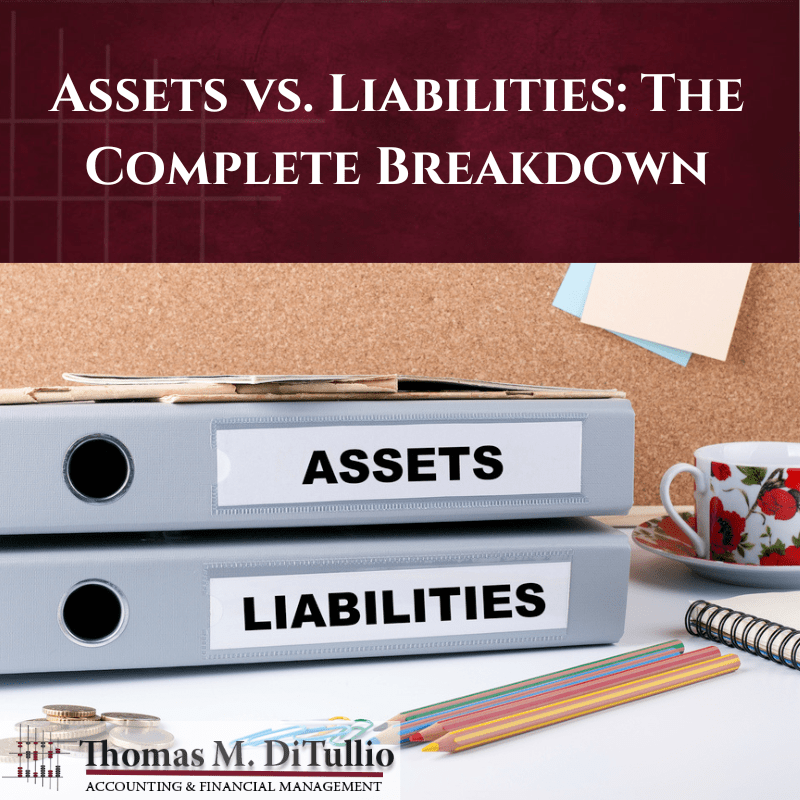Assets vs. Liabilities: The Complete Breakdown
As a business owner, you want to keep an eye on your finances, including your expenses. When you process any transaction, it needs to be recorded in the books. For that reason, you need to know the difference between liabilities and assets. Here is a complete breakdown of these terms and what they mean for your small business.
The Difference Between Assets and Liabilities
Before you can know the differences, you need to understand these terms’ meanings. Liabilities are existing debts that a business owes to a vendor, organization, employee, lender, another business, or government agency. Many of these liabilities will help the business owner finance their company, such as a loan. On the other hand, assets are the resources or sums of value that a business owns. These assets can provide long-term benefits to the owner and also help to generate revenue.
You must list all liabilities and assets on a balance sheet, which is a vital financial document for any business.
What Is a Balance Sheet?
The balance sheet is one of the three fundamental financial statements for a business, along with a cash flow statement and income statement. The balance sheet lists the business’s total assets and how those assets are financed. Balance sheets could be called a statement of financial position or net worth.
The balance sheet will be divided into two sections. All the company’s assets remain on the left side. A list of the liabilities and equity stays on the right. The liabilities and assets are separated into two categories: current and noncurrent. Liquid accounts, such as cash and inventory, are considered part of the current category. Property, equipment, and long-term debt will end up in the noncurrent categories.
Liabilities Examples
Liabilities are either long- or short-term. As previously mentioned, short-term liabilities are current liabilities, and those long-term ones are considered noncurrent. Current liabilities often include credit card balances, accrued expenses, unpaid invoices, and payroll taxes. Noncurrent liabilities are leases, deferred tax payments, and mortgage loans. You must pay those short-term liabilities within one year of incurring the debt. Long-term liabilities are often paid over several years.
Examples of Assets
Similar to liabilities, businesses can also have noncurrent and current assets. A current asset is known as a short-term one, while noncurrent assets are long-term. Current assets include investments, accounts receivable, cash, and inventory. Those noncurrent assets include equipment, trademarks, and patents. All of these items provide continual, long-term value to the businesses. However, you cannot convert noncurrent assets into cash within a year. Additionally, these long-term assets tend to depreciate over a period of time.
Along with that, assets are intangible or tangible. Intangible assets are non-physical items you cannot convert to cash, including trademarks, business licenses, logos, and patents. Tangible assets are physical items that you can easily convert to cash. These assets include bonds, equipment, and inventory.
Assets, Liabilities, and Equity
Once you figure out what you owe compared to what you own, you will want to know how much value is left over. That term is known as equity. You can figure that out by totaling your assets and subtracting those liabilities. For small business owners, your equity is the business’s net worth. If you have a partnership or sole proprietorship, the equity is often called the “owners equity” on the balance sheet. In a corporation, this equity is referred to as “shareholders’ equity.”
No matter the name, equity is vital to your company’s relationship between liabilities and assets. On the balance sheet, the assets equal the total returns plus the total equity. There are several accounting equations to use to determine these figures, such as:
- Equity = Assets – Liabilities
- Assets = Liabilities + Equity
- Liabilities = Assets – Equity
With those equations, your small business accounting services can determine if the business finances through debt or uses its own funds to operate the company. However, these equations will only work for those who use the double-entry bookkeeping methods for their books.
Equity can affect both sides of these equations. If the business only has figures for equity and assets, it can easily calculate liabilities with no issues. Remember that bookkeeping and accounting can be tricky for any business owner. For that reason, hiring a professional to help calculate your assets, liabilities, and equity may be a good idea.
Do These Calculations Matter?
Liabilities, assets, and equity are essential for your business accounting system. With these numbers, you know how much you own, how much you have, and what is left over for your business. You will know where your money is at any given point in your business. These numbers ensure you do not make mistakes in recording those transactions.
Balancing liabilities, assets, and equity is the foundation of double-entry bookkeeping. Without knowing these calculations, you will not be able to understand your business’s finances. As a result, you could have a strong cash flow, but you may have an outstanding debt that eats away at your profits. With a better understanding of these terms, you can confidently know the financial health of your business.
At TMD Accounting, we help you track your assets, liabilities, and equity. Our experienced team can assist with your small business’s accounting, bookkeeping, and tax matters. We are a family-owned and -operated business that has been serving the Gloucester County area for over 40 years. You can count on us when you need an accountant for my small business. Schedule an appointment by calling 1-856-228-2205.

